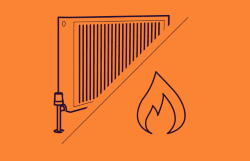Why the need for energy data analysis?
There are two main reasons why there is a growing need for competent energy data analysts. Money, and saving the planet. Two reasons in complete juxtaposition to one another.
It is possible to save hundreds, even thousands of pounds by cutting down your energy consumption and altering behavioural habits at a personal or business level. For domestic customers or those with excessively high consumption, this is a straightforward task. For businesses and those with normal to low consumption levels, often data is needed to locate and drive improvement in the areas that need it.
It is maybe a difficult stretch to say that data analysts will save the planet, and it may not hold completely true. But they certainly play their part
So, keep reading for some tips and rules on how to analyse your energy consumption– you never know how much money you could save!
The five rules for energy data analysis.
Metering: Data does not mean anything unless it comes from a genuine reputable source. For energy and consumption data – this means meters. Most utility companies will install consumption meters (gas, electricity, water) which now allow for accurate collection of data.
This is now ‘the standard’ across the board, with both domestic and business customers having smart meters installed into their properties. Larger businesses with huge facilities are able to sub-meter different areas of their property, collecting incredibly detailed data.
If you do not currently have a smart meter installed, then contact your supplier!
Data doesn’t mean anything until analysis: Collecting data is not the same as analysing data. Data collection is crucial – but it doesn’t actually mean anything until it is analysed…
Do not fall into the trap of thinking that because you are collecting every trackable metric known to man that you are ‘analysing’ anything. Raw data should never ever ever be used to draw conclusions or make decisions.
Analysis is a comparison of expected vs actual: This is the part where you begin to organise your raw data a little bit better. This tip can be summed up by one word – Context.
The statement ‘We used 300kW of electricity during Monday morning at 9am’ does not have any real meaning behind it. It tells us exactly how much electricity has been used, on what day, and at what exact time. Think of this statement as your raw data.
What it doesn’t tell us is if this is good, bad, awful, dangerous, safe, why, what it was used for etc. We need context in order to understand.
Now, change the statement slightly.
‘We used 300kW of electricity during Monday morning at 9am, the week prior we used 400kW and decided to try and lower it.’
We have added context to our ‘raw data’ by comparing it against historical data and including our desired (expected) results. We can now make statements with a little more
Sustained deviation from expectation: Nobody is perfect, people make mistakes. This is universal.
Even within the most advanced data collection and analysis systems, there will still be some element of error. Small, random variances between metered and expected values are entirely normal. So, what do you do if the mistake keeps on occurring?
Firstly, you should change your definition ‘mistake’ in this scenario. Small deviation between expected and metered values? Annoying mistake. Small sustained deviation? You have successfully identified a trend within your results – which can signal a change in operational conditions.
Use common sense: Continuing on from the previous point – people make mistakes.
What is more likely, you have made a typo when compiling your data spreadsheet – or that your business consumes 1,000,000 kW of electricity at 3AM every Wednesday?
Data analytics can be a powerful tool when used correctly – but only if it is used correctly. Use your head at all stages of analysis, if something seems too good to be true… it probably is.
How to analyse data
Profile analysis:
Depending on the software suite and/or the data available to you, it is possible to graph your consumption data with time to create consumption profiles. This is a much more visually stimulating way in which to present data that allows for a greater deal of immediate understanding.
An example of a daily consumption profile will look a little something like this:

Regression analysis: You may be familiar with this technique if you have completed any statistical work before. Regression analysis helps to identify which variable has the most impact on your specific area of interest.
Data normalisation
Identifying non operational data
Alert by exception
Why this isn’t the case in the real world
Realistically – this is all great in theory but not much else.
If you are a domestic customer or operate a small business, it is likely that you will have found some use from this article. Energy data analysis is a woefully tricky subject and it is horribly difficult to know where to begin sometimes. But, here’s the catch (the first catch, that is).
When learning anything for the first time there will be a period of ‘trial and error’. This is where an individual has learned enough of the theory to know roughly what to do, but can’t grow their knowledge further without practicing. Domestic customers can do this in a relatively low-risk environment during their free-time. Best-case scenario is saving a little bit of money and learning about consumption habits while the worst-case scenario is simply wasting some free time.
Is this the same for business customers? In short, no.
Unless you run a small business, it is likely that there are multiple stakeholders and/or board members who influence operational decisions. Trying to keep all of these people happy when it comes to spending company resources is a tricky act…
What poses less risk – allowing an untrained individual within your company to complete incredibly complex data analysis that will underpin all future decision making, or simply paying a professional to complete the job?
What actually happens in the real world?
The process of energy data analysis often becomes outsourced to another company – often already operating within the energy sector. There are businesses and individuals who have already gained the necessary expertise to wrestle with huge energy data-sets while understanding the context behind the numbers.
Who would you choose to complete a statistical deep dive and analysis of your company’s energy consumption? Joe Bloggs from the accounting department who has an afternoon off from his work, or a company with well over twenty years of operating experience in the energy sector with employees trained explicitly for this nature of work…?
It is really a no-brainer. By allowing us to do what we do best, it lets you do what you do best.
At Energy Solutions we are familiar with all areas of the energy industry – all the way from installing new supplies and sourcing suppliers, to fitting meters and analysing your data for you.
Simply call us now to organise a quote! Our team members can be reached during usual office hours at 0131 610 1688 or by email: nick@energybrokers.co.uk
We are happy to answer any questions that you may have for us, all you have to do is get in touch! If you would prefer to reach us in another way you can use our webform or WhatsApp us at 07757 400 788
We look forward to hearing from you!
Common Questions
How should I begin analysing my energy data?
For domestic customers – you should always begin by checking what type of meter you currently have installed. It is imperative that you upgrade to a smart meter in order to gain access to your consumption data. Traditional meters do not have this type of functionality.
For business customers it may be too large of a job to tackle by yourself. It is likely you may need to collaborate with other departments or bring in another business to help.
What is important when analysing energy data?
There is no one ‘big’ thing to look out for in particular. For anybody looking to analyse their energy consumption you should always ensure:
- Data is accurate: If data is not accurate, the whole exercise is a waste of time – you will be led to false conclusions.
- Data is comprehensive: The more data you collect – the more you can do with it.
- Data doesn’t take precedent over common sense: Just because the data points towards a particular conclusion does not mean you should accept without question.
What should I look for when analysing my energy data?
For domestic customers you should look for some sort of profile to analyse. By charting your energy consumption at half hourly intervals throughout the day (or in any way you are able to), it is possible to find consumption habits that you never knew you had.
Business customers should be looking to complete more high-powered statistical analysis if possible. Try normalising data, looking for regression etc. If not possible then look to bring in an expert.
Do I analyse my energy data in the same way for my business as I do at home?
It depends on both the size and nature of your business (as-well as how you analyse your energy at home). If your business and/or dataset is small – then it is quite possible to complete a less in-depth analysis of your energy.
If you operate a larger business or rely on energy consumption throughout the production process, then it is likely an unsurmountable task unless you have relevant training and time.
Why do businesses not complete their own energy data analysis?
Many businesses cannot afford the luxury to invest in this area – deeming it to be a wasted expense. It is unlikely that many staff have the free time or expertise to complete such analysis. The potential returns increase the larger your business/energy consumption is.
Can I pay for someone to analyse my energy data?
Yes – you can. There are multiple businesses set up for this exact service. It is important to find a company that has relevant expertise, good reviews etc.



